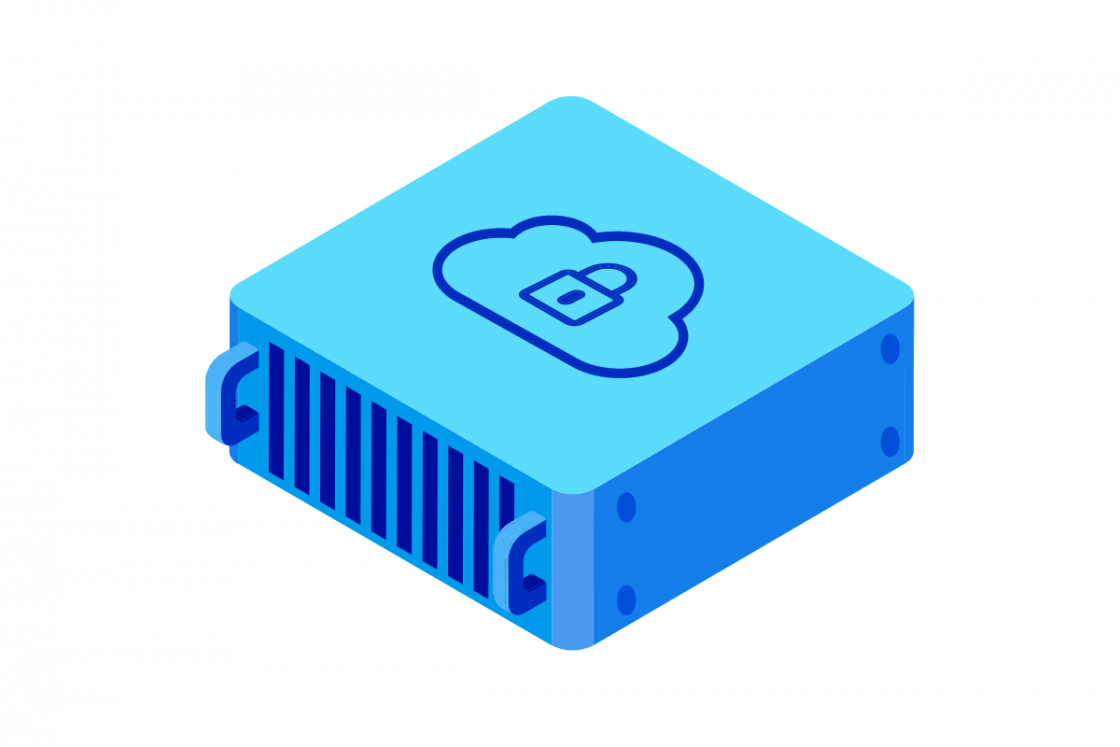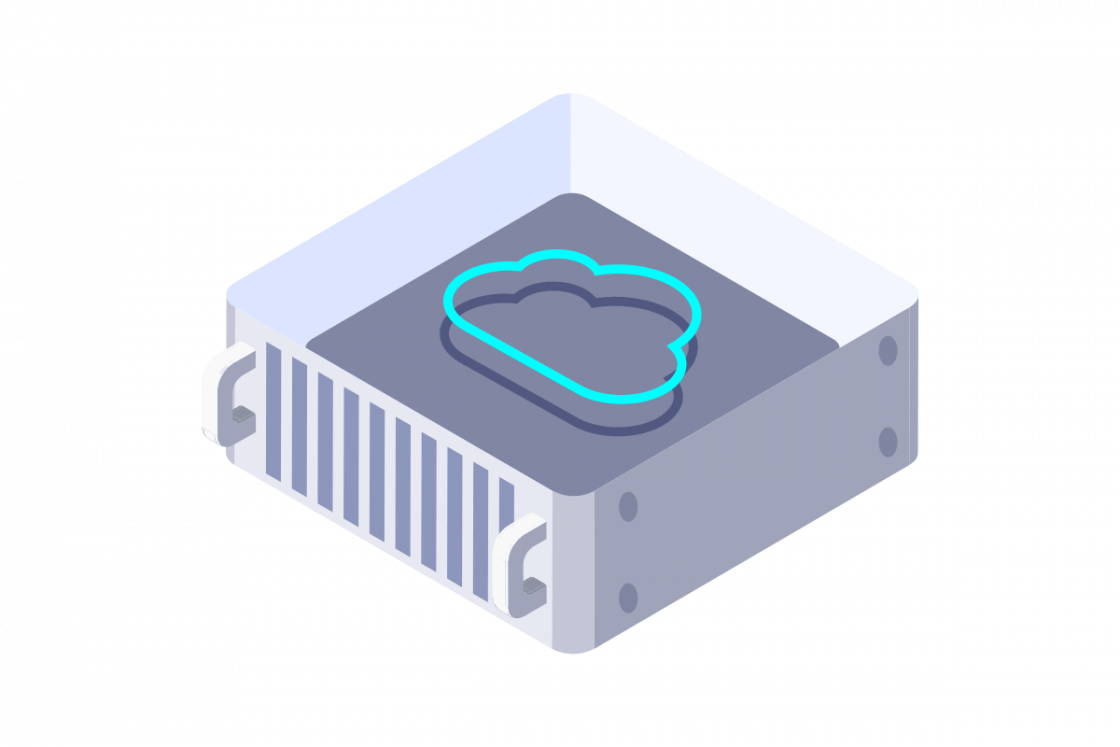What is Disaster Recovery as a Service (DRaaS)?
In today’s fast-paced digital landscape, businesses rely heavily on their IT infrastructure provider to store data, run applications, and maintain operations. However, disasters—whether natural, cyber-related, or human-induced—can strike at any time, potentially crippling business continuity.
Disaster Recovery as a Service (DRaaS) provides a modern, cloud-centric approach to business continuity. Going beyond essential data backup, DRaaS offers automated failover and recovery of entire IT environments through a managed service. This eliminates the need for businesses to maintain dedicated, on-premises DR infrastructure. DRaaS's scalability and pay-as-you-go model allows companies to quickly adapt to changing needs and recover operations with minimal downtime, all while relying on the expertise of a specialised service provider.

In this guide, we explain why organisations face significant financial and reputational risks without a solid disaster recovery plan. Downtime costs can range from thousands to millions of dollars per hour, depending on the size and industry of the business. DRaaS mitigates these risks by providing a cost-effective and scalable approach to disaster recovery, making it a vital component of modern IT strategies.
Disaster Recovery as a Service (DRaaS): Ensuring Business Continuity
With managed DRaaS, businesses can restore their systems in minutes or hours rather than days or weeks.
One of the pure advantages of DRaaS is its cloud-based nature, which eliminates the need for expensive on-premises infrastructure solutions. Traditional disaster recovery solutions require businesses to maintain a redundant data center or dedicated servers, which can be costly and resource-intensive. DRaaS leverages cloud computing to provide scalable, on-demand disaster recovery, making it accessible to businesses of all sizes.
The Evolution of Disaster Recovery Strategies
Historically, incorporating disaster recovery into cloud security solutions involved manual processes and required extensive hardware investments, as well as an expensive provider. Businesses would have to maintain secondary data centers, set up backup tapes, and rely on IT teams to restore systems in the event of a disaster.
This method was not only expensive but also time-consuming, making it difficult for organisations to achieve true resilience with these services.
With the rise of cloud computing and virtualization technologies, DRaaS has emerged as a game changer in disaster recovery (DR). Instead of relying on physical infrastructure, businesses can now leverage managed cloud-based solutions that provide rapid recovery capabilities. This shift has significantly improved recovery times and reduced the cost of maintaining secondary infrastructure.
What is DRaaS and How Does It Work?
DRaaS operates by continuously replicating a company’s critical data, applications to an offsite cloud environment. In the event of a disaster, the backup environment is activated, allowing businesses to resume operations. The core components of DRaaS include:
- Continuous Data Replication: DRaaS solutions continuously or periodically replicate data from primary systems to a remote, cloud-based storage environment. This ensures that even if a primary data center is compromised, an up-to-date copy of the data remains accessible and available. Customers can choose between synchronous and asynchronous replication methods, depending on their tolerance for data loss and latency.
- Rapid Recovery: Traditional disaster recovery methods often take hours or even days to restore IT systems. DRaaS significantly reduces recovery times, often restoring operations within minutes. By leveraging cloud-based virtual machines (VMs) and automated processes, DRaaS enables organisations to resume normal operations with minimal delay, mitigating financial and reputational losses.
- Testing and Monitoring: DRaaS providers offer regular testing and monitoring to ensure that disaster recovery plans remain effective. Frequent tests help organisations identify potential vulnerabilities and refine their recovery strategies. Continuous monitoring enables the early detection of issues, allowing businesses to address risks before they escalate into full-blown disasters.
- Cloud Integration: Managed DRaaS solutions seamlessly integrate with various cloud platforms, allowing businesses to protect workloads across hybrid, multi-cloud, and on-premises environments. Whether an organisation relies on public cloud security providers to maintain private cloud security infrastructure, DRaaS can be configured to ensure comprehensive protection, including for hybrid clouds.
Key Features of Disaster Recovery as a Service
DRaaS management offers a range of features that help businesses protect their data and ensure business continuity, including:
Cloud-Based Replication
DRaaS eliminates the need for on-premises backup infrastructure by replicating data to secure, offsite cloud environments. This ensures that businesses have immediate access to their data and applications, even in the event of catastrophic on-premises failures.
Customizable Recovery Plans
Different business customers have unique disaster recovery needs and require tailored solutions. DRaaS providers offer flexible recovery point objectives (RPOs) and recovery time objectives (RTOs) to meet various business requirements. Companies can define which applications and data sets require priority recovery.
Cybersecurity and Compliance
DRaaS services incorporate robust security measures, including data encryption, access controls, and compliance frameworks, to ensure regulatory adherence. Whether businesses must comply with GDPR, HIPAA, PCI-DSS, or other industry standards, DRaaS provides tools to help meet security and compliance requirements, including data backup and recovery.
Scalability
DRaaS solutions can scale up or down based on business and customer needs. Whether an organisation is growing rapidly or experiencing seasonal fluctuations, DRaaS providers offer flexible plans that allow businesses to adjust resources as needed.
Multi-Platform Compatibility
DRaaS solutions support a wide range of operating systems, applications, and database environments. Businesses can ensure compatibility across Linux, Windows, virtualised platforms like VMware, and containerized applications, such as Kubernetes.
Proactive Monitoring
Managed DRaaS solutions continuously monitor IT infrastructure for potential failures, alerting IT teams to anomalies before they impact operations. Advanced analytics and artificial intelligence (AI) can predict failures and automatically initiate preventive measures.
Disaster Recovery Testing
Regular testing is crucial to the success of a disaster recovery solution. DRaaS providers offer automated and manual testing options to validate recovery plans, helping organisations prepare for real-world disaster scenarios.
Geo-Redundant Storage
Storing backup data in multiple geographically dispersed locations enhances resilience. In the event of a regional disaster, businesses can access replicated data and services from a different location, ensuring uninterrupted operations.
Flexible Retention Policies
Organizations can define backup retention policies tailored to their specific compliance and operational needs. Some businesses may require short-term backups for operational efficiency, while others need long-term archival storage for legal and regulatory purposes.
The Importance of DRaaS for Business Survivability
Businesses generate vast amounts of critical data daily at every site. Losing this data due to a disaster can lead to significant financial and operational setbacks. DRaaS ensures that all essential business data remains backed up and recoverable.
IT outages can cost businesses thousands of dollars per minute. DRaaS minimises downtime by enabling rapid recovery, ensuring that organisations can continue operations with minimal disruption. It works similarly to features like multi-factor authentication, as it helps secure a company's IT infrastructure.
Cyber threats such as ransomware or malware are a growing concern for businesses, as we learn. DRaaS solutions provide an extra layer of security by allowing organisations to restore compromised data without paying ransom demands.
Benefits of DRaaS for Businesses
One of the pure advantages of DRaaS management is its provider cost-effectiveness for customers. Traditional disaster recovery solutions require significant investments in hardware, software, and maintenance. In contrast, DRaaS operates on a subscription-based model, eliminating the need for costly infrastructure. Businesses can access high-quality disaster recovery solutions at a fraction of the cost, making it a viable option for organisations of all sizes.
Scalability for customers is another significant benefit of DRaaS. As businesses grow, their IT environments become more complex, requiring flexible disaster recovery solutions.
DRaaS enables organisations to scale their recovery plans according to their specific needs, ensuring they remain prepared for any eventuality. The ability to integrate seamlessly with cloud and hybrid systems further enhances the appeal of DRaaS, providing businesses with a comprehensive and adaptable disaster recovery strategy.
DRaaS Use Cases and Applications
Industries with strict regulatory requirements, such as healthcare, finance, and government, benefit significantly from DRaaS. Compliance with data protection laws is essential, and a DRaaS solution ensures that businesses meet these requirements through secure storage, encryption, and audit trails.
Small and medium-sized businesses (SMBs) also leverage DRaaS as an affordable pure alternative to traditional disaster recovery methods, enabling them to maintain business continuity without extensive IT resources. Large enterprises, on the other hand, utilise DRaaS to safeguard mission-critical site operations, ensuring seamless site recovery in the event of a disaster.
DRaaS vs. BaaS: Understanding the Differences
While DRaaS focuses on the recovery of the entire IT infrastructure, Backup as a Service (BaaS) primarily deals with data storage and protection. BaaS ensures that data is securely backed up and retrievable when needed; however, it does not offer automated failover or rapid recovery capabilities.
DRaaS, on the other hand, provides complete business continuity solutions, including for virtual servers, allowing organisations to resume operations immediately after an outage. Businesses that require minimal downtime typically opt for Disaster Recovery as a Service (DRaaS), while those seeking simple backup solutions may choose Backup as a Service (BaaS).
Implementing DRaaS and Choosing the Right Vendor
While understanding the benefits and features of DRaaS management is crucial, the read is that successful implementation hinges on careful planning and vendor selection. Begin by conducting a thorough risk assessment, identifying critical assets, analysing potential threats, and determining your Recovery Time Objective (RTO) and Recovery Point Objective (RPO) based on business impact analysis.
When evaluating a DRaaS provider, carefully review their Service Level Agreements (SLAs) and pay close attention to uptime guarantees, recovery times, and support availability. Ensure the vendor meets your security and compliance requirements, including data encryption, access controls, and adherence to industry regulations.
Verify that the vendor offers robust testing capabilities and provides detailed reports on recovery performance. Regular testing is essential to validate the effectiveness of your DRaaS plan. Choose a vendor that can scale with your business needs and offers flexible recovery plans tailored to your specific requirements. Evaluate the vendor's support services and technical expertise. Look for providers with experienced engineers and responsive customer support.
Confirm the vendor's geographic redundancy and ensure that the location of the backup data is sufficiently distant from your main location to prevent a single disaster from affecting both. Understand the vendor's pricing model and ensure there are no hidden costs. Request detailed quotes and compare offerings from multiple providers.
Develop a comprehensive DRaaS implementation plan, considering a phased approach, regular testing and validation, documentation and training, continuous monitoring and optimisation, and a communication plan. For some organisations, a full shift to cloud-based DRaaS may not be feasible or desirable.
Hybrid DRaaS solutions combine on-premises infrastructure with a cloud-based provider for replication and recovery, offering a flexible approach that strikes a balance between cost and performance. By following these guidelines, businesses can effectively implement DRaaS and select a vendor that aligns with their specific needs, ensuring robust business continuity and minimising the impact of potential disasters.
OVHcloud and DRaaS
Safeguard your critical infrastructure and ensure business continuity with OVHcloud's robust security and disaster recovery solution. From protecting your Hosted Private Cloud environments to defending against sophisticated DDoS attacks, we provide the tools and expertise you need to maintain operational resilience and minimise downtime. Read below to see how our tools can help:

Disaster Recovery Plan
Ensure business continuity with our Disaster Recovery Plan for VMware Hosted Private Cloud. Protect your critical data and applications with robust replication and failover solutions, minimising downtime and safeguarding your operations in the event of a disaster.

Nutanix Disaster Recovery
Maintain operational resilience with our Disaster Recovery solutions for Nutanix Hosted Private Cloud. Leverage advanced replication and orchestration capabilities to protect your Nutanix environment, ensuring rapid recovery and minimal disruption.

OVHcloud Veeam Managed Backup
Ensure the resilience of your Hosted Private Cloud powered by VMware with the OVHcloud Veeam Managed Backup service. This Veeam service provides a fully managed backup and recovery solution, leveraging Veeam's industry-leading technology. Safeguard your critical data and applications with automated backups, granular recovery options, and off-site storage in OVHcloud's secure infrastructure.